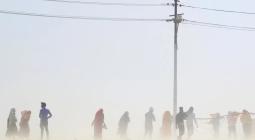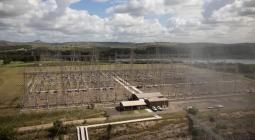MADAGASCAR: among the countries considered “at high risk” of El Niño impacts
The island of Madagascar, off the southeast coast of Africa, is set to experience increased drought in 2024. According to the United Nations, the island is one of 35 countries worldwide considered to be "at high risk" from the impacts of the El Niño phenomenon.
Rainfall warning lights were triggered on Wednesday February 7, 2024 in Madagascar’s Grand Sud, a region already highly vulnerable to the effects of climate change. Satellite observations and weather stations are recording a significant water deficit, marked by temperatures of at least 35 degrees Celsius and dry winds that make the red earth swirl.
The consequences of this very low rainfall should be felt by the population as early as May 2024, when the harvest begins. The peak of food insecurity is expected in October 2024, if harvests fail. “Madagascar is already facing a climate crisis. And with the return of El Niño, the consequences could be dramatic”, warns Reena Ghelani, the UN coordinator on the climate crisis and the El Niño phenomenon, who concluded a visit to Madagascar’s Grand Sud on Friday February 2, 2024.
El Niño is a climatic phenomenon characterized by abnormally high water temperatures in the eastern part of the South Pacific Ocean. Combined with the global rise in surface temperatures, this phenomenon exacerbates the effects of climate change. The World Meteorological Organization (WMO) ranks Madagascar among the 35 countries in the world considered “at high risk” of El Niño impacts. Seven other African countries feature in this top 35, namely Botswana, Eswatini, Lesotho, Malawi, Mozambique, South Africa and Zimbabwe, where the impact of El Niño last year resulted in widespread crop failure and the drying-up of community water points used by the population, for livestock and for agricultural purposes.
Mobilization of international humanitarian aid
According to the WMO, 2024 could break the heat record set last year under the effects of El Niño warming. In Madagascar’s Grand Sud region, where around 45% of the population in some districts is facing acute levels of food insecurity, humanitarian actors fear that the drought will amplify existing vulnerabilities. During the last El Niño episode in 2015-2016, the region was hit by a severe drought. The cost of the humanitarian response, which lasted three years, was estimated at $180 million.
As part of the National Humanitarian Response Plan (PNRH) 2023-2024, the Malagasy government and its partners intend to help around 1.6 million people starved by the climate crisis. The international community is called upon to mobilize $162 million for this plan.
Cover photo: By AFRIK21





